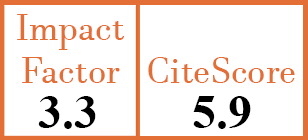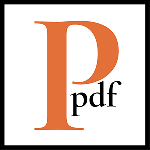Full Papers
Antiphospholipid antibody-related clinical manifestations during childhood versus adulthood: descriptive results from the AntiPhospholipid Syndrome Alliance for Clinical Trials and InternatiOnal Networking (APS ACTION) clinical database and repository
J. Pandya Bhatt1, M. Dale2, D.C.O. De Andrade3, A.E. Clarke4, M.G. Tektonidou5, V. Pengo6, S. Sciascia7, J. Pardos-Gea8, M.A. Aguirre-Zamorano9, N. Kello10, D. Paredes-Ruiz11, H.M. Belmont12, P.R. Fortin13, D. Wahl14, W. Branch15, G. Maria16, G. De Jesus17, Z. Zhang18, T. Atsumi19, M. Efthymiou20, G. Pazzola21, C. Nalli22, A. Duarte-García23, E. Rodriguez Almaraz24, M. Petri25, R. Cervera26, B. Artim-Esen27, G. Pons-Estel28, H. Shi29, Y. Zuo30, R. Willis31, M.R. Barber32, L. Skeith33, M. Radin34, A. Anunciacion-Llunell35, M.L. Bertolaccini36, H. Cohen37, D. Erkan38
- AdventHealth for Children, Orlando, FL, USA.
- Hospital for Special Surgery, New York, NY, USA.
- University of São Paulo, Brazil.
- University of Calgary, Alberta, Canada.
- National and Kapodistrian University of Athens, Greece.
- Padova University Hospital, Padova, Italy.
- ASL Città Di Torino and University of Turin, Italy.
- Vall d’Hebron University Hospital Barcelona, Spain.
- IMIBIC/Reina Sofia Hospital, University of Cordoba, Spain.
- Northwell Health, Great Neck, NY, USA.
- Biobizkaia Health Research Institute, Barakaldo, Spain.
- New York University Langone Medical Center, New York, NY, USA.
- CHU de Québec- Université Laval, Quebec, Canada.
- Université de Lorraine, Inserm DCAC, and CHRU-Nancy, France.
- University of Utah and Intermountain Healthcare, Salt Lake City, UT, USA.
- University of Milan, Italy.
- Universidade do Estado do Rio de Janeiro, Brazil.
- Peking University First Hospital, Beijing, China.
- Hokkaido University Hospital, Sapporo, Japan.
- University College London, UK.
- Rheumatology Unit, Azienda USL IRCCS di Reggio Emilia, Italy.
- University of Brescia, Italy.
- Mayo Clinic, Rochester, MN, USA.
- Hospital Universitario 12 de Octubre, Madrid, Spain.
- Johns Hopkins University School of Medicine, Baltimore, MD, USA.
- Hospital Clinic Barcelona, Spain.
- Istanbul University School of Medicine, Istanbul, Turkey.
- Centro Regional de Enfermedades Autoinmunes y Reumáticas del Grupo Oroño (GO-CREAR), Rosario, Argentina.
- Ruijin Hospital, Shanghai Jiao Tong University School of Medicine, Shanghai, China.
- University of Michigan, Ann Arbor, MI, USA.
- University of Texas Medical Branch, Galveston, TX, USA.
- University of Calgary, Alberta, Canada.
- University of Calgary, Alberta, Canada.
- ASL Città Di Torino and University of Turin, Italy.
- Vall d’Hebron University Hospital Barcelona, Spain.
- King’s College London, UK.
- University College London, UK.
- Barbara Volcker Center for Women and Rheumatic Disease, Hospital for Special Surgery, Weill Cornell Medicine, New York, NY, USA. erkand@hss.edu
CER18750
Full Papers
PMID: 40737058 [PubMed]
Received: 23/03/2025
Accepted : 02/07/2025
In Press: 30/07/2025
Abstract
OBJECTIVES:
There is a limited number of studies comparing paediatric to adult antiphospholipid syndrome (APS) patients. Our objective was to analyse the characteristics of patients presenting with antiphospholipid antibody (aPL)-related clinical manifestations during childhood versus adulthood.
METHODS:
We retrieved baseline characteristics from an international registry of persistently aPL-positive adult patients. Clinical events were grouped as vascular and non-vascular. We compared the frequency of and the timeline between vascular and non-vascular events for different age groups at the time of their first aPL-related manifestations: a) paediatric- (0–17 years) versus adult-onset (18–75 years); and b) based on narrower age intervals. Secondly, we analysed the timeline between the first aPL-related clinical event and first aPL positivity.
RESULTS:
Of 787 patients, 447 (57%) had only vascular events, 108 (14%) only non-vascular events, and 232 (29%) both. Compared to adult-onset patients (n=742), paediatric-onset patients (n=45) presented more commonly with a non-vascular event (49% vs. 19%, p=0.0001). The percentage of patients presenting with a non-vascular event mostly decreased with each increasing age group. Timeline analysis demonstrated 317 (40%) patients had a positive aPL test within the same calendar year (c-y) of the first clinical event, 207 (26%) within 1 to 3 c-y, and 263 (33%) more than 3 c-y.
CONCLUSIONS:
Our analysis of an international registry for persistently aPL-positive patients demonstrates that patients with paediatric-onset aPL-related manifestations more commonly present with non-vascular events. These results highlight the importance of understanding the clinical differences between paediatric and adult APS patients, which have diagnostic, therapeutic, and research implications.


